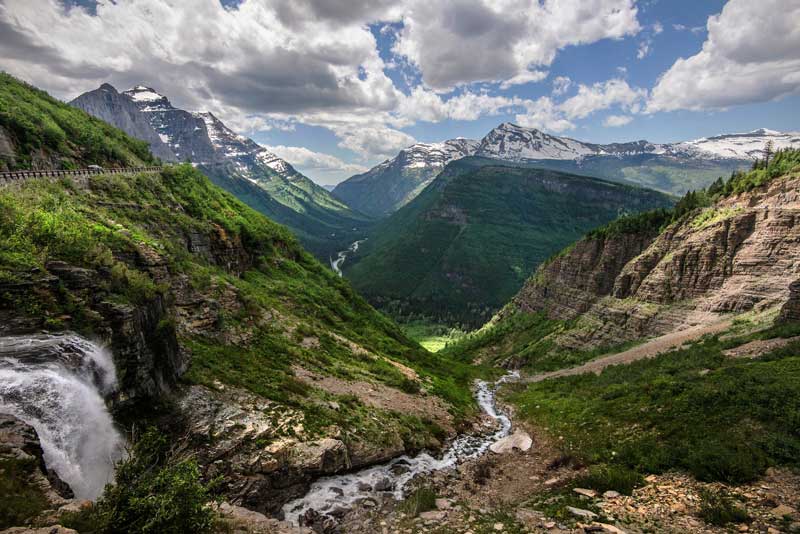A road trip is an adventure. It means traveling long distances by car. People enjoy the freedom and flexibility it offers. You can choose your route and schedule. Road trips are perfect for bonding with family and friends. They are cost-effective compared to flights.
Road trips have a rich history. The first one took place in 1888 by Bertha Benz. She drove from Mannheim to Pforzheim in Germany. Today, millions of people embark on road trips annually. The popularity of road trips grew with the expansion of highways. The U.S. Route 66 is an iconic example.
Planning a road trip involves a few steps. Ensure your vehicle is in good condition. Pack essentials like food, water, and a first aid kit. Prepare for unexpected stops and detours. Road trips are also great for discovering hidden gems. Small towns, local eateries, and scenic spots make the journey memorable.
Passing through national parks can add a special touch to your trip. These parks offer stunning landscapes and unique wildlife. They provide a chance to connect with nature. Exploring national parks can make your road trip an unforgettable experience. Enjoy the open road and make lasting memories.
Best National Parks to Drive Through
1. Glacier National Park (Montana)
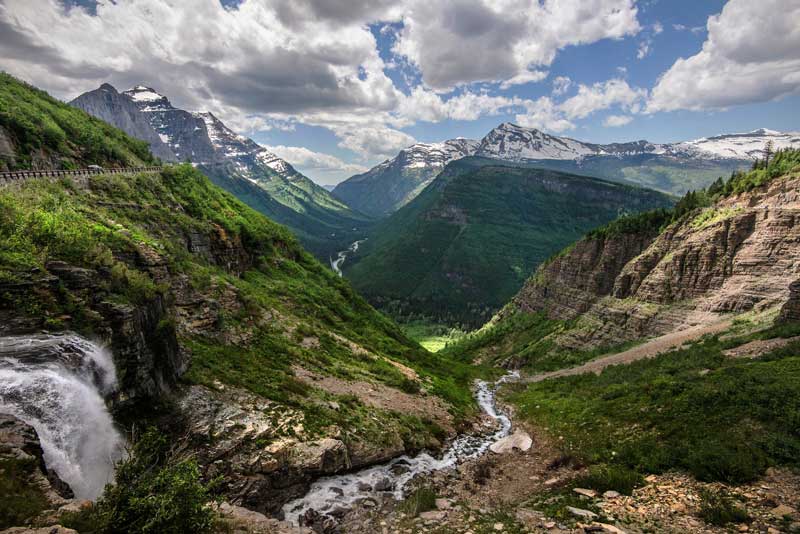
Glacier National Park (Montana)
Glacier National Park, known as the “Crown of the Continent,” is a paradise for adventure seekers. Located in Montana, the park features over 700 miles of trails, stunning alpine meadows, and pristine lakes. The most famous drive in Glacier National Park is the Going-to-the-Sun Road.
The Going-to-the-Sun Road is a 50-mile drive that crosses the park from east to west. It offers breathtaking views of glaciers, mountains, and valleys. The road reaches its highest point at Logan Pass, where visitors can stop at the visitor center and enjoy the scenery. Along the way, you might spot mountain goats, bighorn sheep, and even grizzly bears.
Spring and summer are the best times to visit Glacier National Park. The road is usually open from late June to early October, depending on snow conditions. Fall brings beautiful foliage, and winter transforms the park into a snowy wonderland, though the road is closed.
Camping and lodging are available in the park. Reservations are recommended, especially during the peak summer season. Be sure to check road conditions and weather forecasts before your trip.
Address: Glacier National Park, West Glacier, MT 59936
2. Yellowstone National Park (Wyoming, Montana, Idaho)
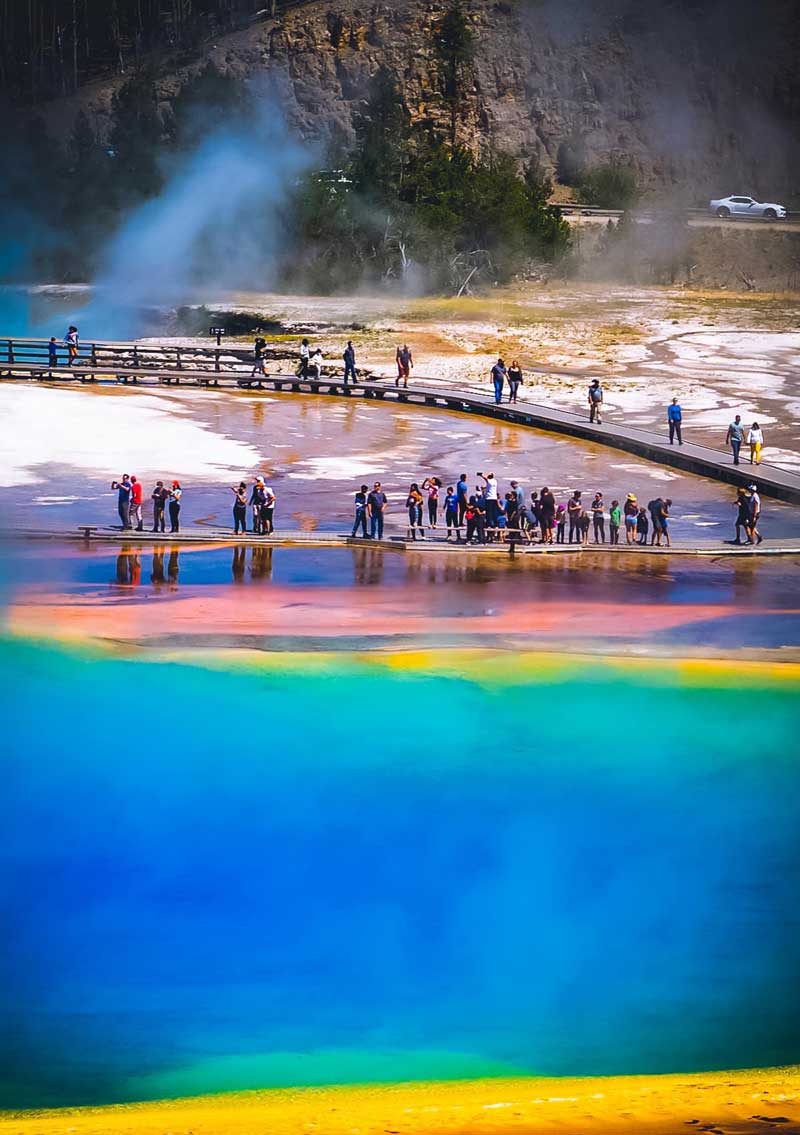
Yellowstone National Park (Wyoming, Montana, Idaho)
Yellowstone National Park, established in 1872, is the world’s first national park. It spans across three states: Wyoming, Montana, and Idaho. The park is famous for its geothermal features. Half of the world’s active geysers, including the famous Old Faithful, are here.
Driving through Yellowstone is an unforgettable experience. The Grand Loop Road is a must. This 142-mile loop takes you through diverse landscapes. You’ll see geysers, hot springs, and waterfalls. The Grand Canyon of the Yellowstone River is a highlight. It offers stunning views of the Lower and Upper Falls.
Wildlife is abundant. You might spot bison, elk, and even grizzly bears. Lamar Valley is a great place for wildlife viewing. Be sure to stay safe and keep your distance from animals.
Summer is the most popular time to visit. However, spring and fall offer fewer crowds and beautiful scenery. Winter brings a unique charm with snow-covered landscapes.
Lodging and camping options are available. Reservations are recommended, especially in peak seasons. Be prepared for sudden weather changes and always check road conditions.
Address: Yellowstone National Park, WY 82190-0168
3. Yosemite National Park (California)
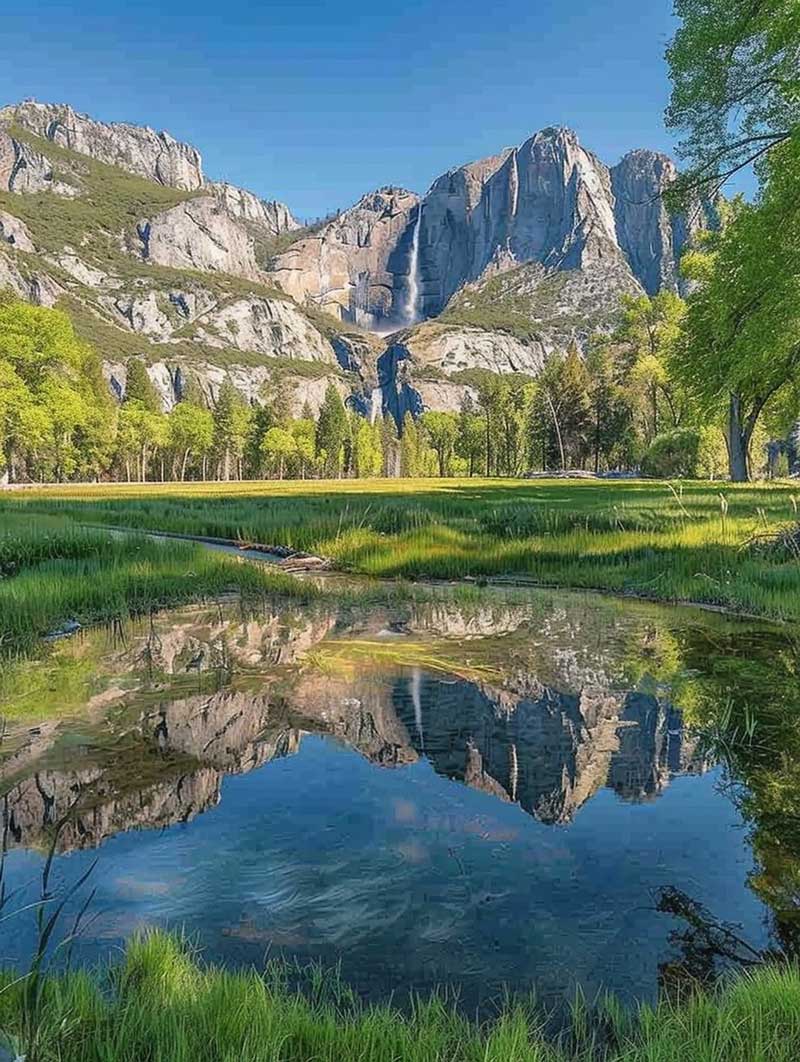
Yosemite National Park (California)
Yosemite National Park, established in 1864, is renowned for its breathtaking landscapes. Located in California’s Sierra Nevada mountains, it covers nearly 1,200 square miles. Yosemite is best known for its waterfalls, granite cliffs, and giant sequoias.
A drive through Yosemite offers spectacular views. The Tioga Road, which crosses the park from east to west, is particularly scenic. It takes you through high alpine country, past meadows, lakes, and forests. The Glacier Point Road offers stunning views of Yosemite Valley, Half Dome, and the High Sierra.
Yosemite Valley is a must-see. It features iconic landmarks such as El Capitan and Bridalveil Fall. The valley is also home to Yosemite Falls, the tallest waterfall in North America.
In spring, waterfalls are at their peak due to snowmelt. Summer brings warm weather and clear skies, but also crowds. Fall offers colorful foliage, and winter transforms the park into a snowy wonderland.
Yosemite has numerous hiking trails, ranging from easy walks to challenging climbs. Popular activities include rock climbing, camping, and photography.
Reservations are required during peak seasons. Lodging options range from historic hotels to campgrounds.
Address: Yosemite National Park, CA 95389
4. Great Smoky Mountains National Park (Tennessee, North Carolina)
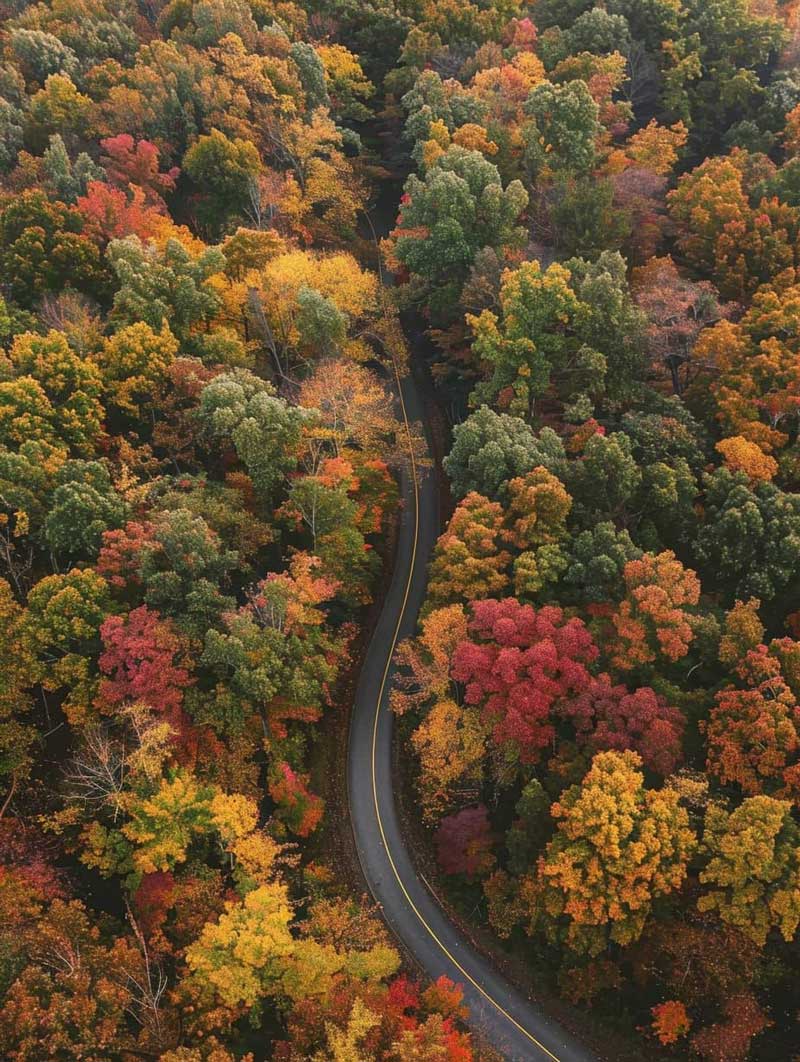
Great Smoky Mountains National Park (Tennessee, North Carolina)
Great Smoky Mountains National Park straddles the border between Tennessee and North Carolina. It is America’s most visited national park. The park is famous for its biodiversity, ancient mountains, and remnants of Southern Appalachian culture.
The Newfound Gap Road is a popular scenic drive. It crosses the park from Gatlinburg, Tennessee to Cherokee, North Carolina. The road offers stunning views of the Smokies and access to several trailheads. Clingmans Dome, the highest point in the park, provides panoramic views from its observation tower.
Cades Cove is another must-see. This scenic valley is surrounded by mountains and offers an 11-mile one-way loop road. The loop is ideal for wildlife viewing, including deer, black bears, and wild turkeys. Historic buildings, such as churches and log cabins, dot the landscape.
Spring brings wildflowers, while fall is famous for its colorful foliage. Summer is lush and green, perfect for hiking and picnicking. Winter offers a quieter experience with the possibility of snow.
Great Smoky Mountains National Park has ten developed campgrounds and numerous backcountry campsites. No entrance fee is required, but parking tags are necessary.
Address: 107 Park Headquarters Road, Gatlinburg, TN 37738
5. Grand Canyon National Park (Arizona)
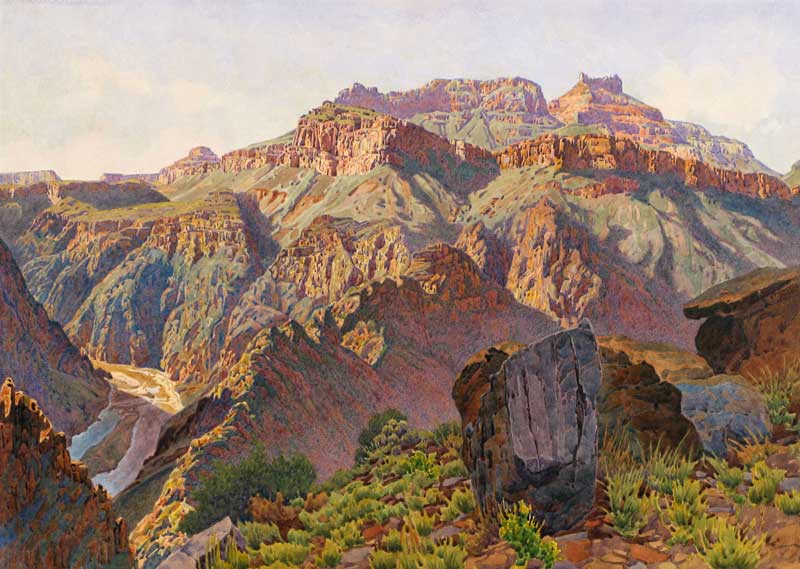
Grand Canyon National Park (Arizona)
Grand Canyon National Park, located in northern Arizona, is a geological wonder. The park spans 278 miles of the Colorado River and adjacent uplands. The canyon’s immense size and intricate landscapes attract millions of visitors each year.
Driving through the park offers breathtaking views. The Desert View Drive on the South Rim is a must. It stretches for 25 miles and provides numerous scenic overlooks. You can see the Colorado River winding through the canyon and catch a glimpse of the Desert View Watchtower.
The North Rim offers a different perspective. It’s less crowded and more remote. The scenic drive to Point Imperial, the highest point on the North Rim, is spectacular. The road winds through lush forests and opens up to incredible canyon views.
Spring and fall are the best times to visit. Summer can be very hot, especially at the canyon’s lower elevations. Winter brings snow to the rims, creating a stunning contrast with the red rock.
There are various lodging and camping options. Reservations are highly recommended, especially during peak seasons. Don’t forget to check the weather and road conditions before you go.
Address: Grand Canyon National Park, AZ 86023
6. Zion National Park (Utah)
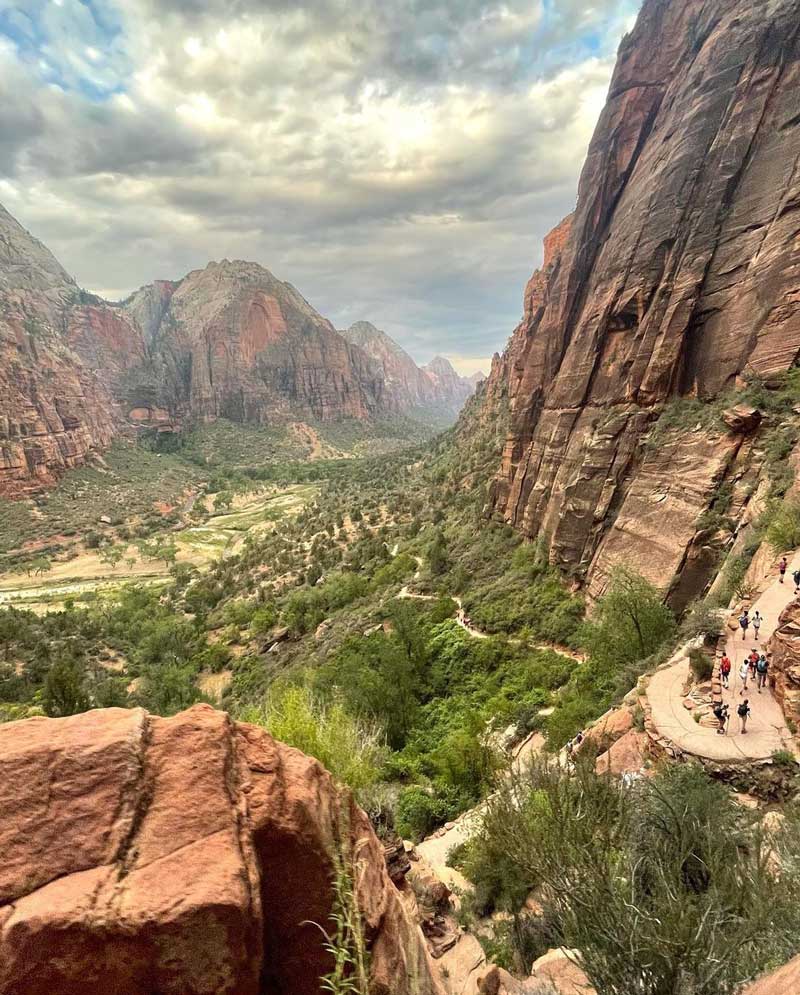
Zion National Park (Utah)
Zion National Park, Utah’s first national park, is known for its massive sandstone cliffs and narrow slot canyons. The park’s landscape is a mix of cream, pink, and red cliffs that contrast beautifully with the bright blue sky.
Driving through Zion is an adventure. The Zion Canyon Scenic Drive is the most popular route. It takes you through the heart of the canyon, offering stunning views and access to many of the park’s famous trails. The drive is only accessible by shuttle bus from spring to fall, reducing traffic and preserving the park’s beauty.
The Zion-Mount Carmel Highway is another must-see. This 12-mile road includes the famous Zion-Mount Carmel Tunnel and opens up to panoramic views of the park’s unique geology. Checkerboard Mesa is a notable stop along this route.
Spring and fall are the best times to visit Zion. The weather is mild, and the park is less crowded. Summer can be very hot, while winter brings occasional snow.
Zion offers a range of accommodations, including campgrounds and lodges. Plan ahead and make reservations early, especially for the busy summer months.
Address: Zion National Park, Springdale, UT 84767
7. Rocky Mountain National Park (Colorado)
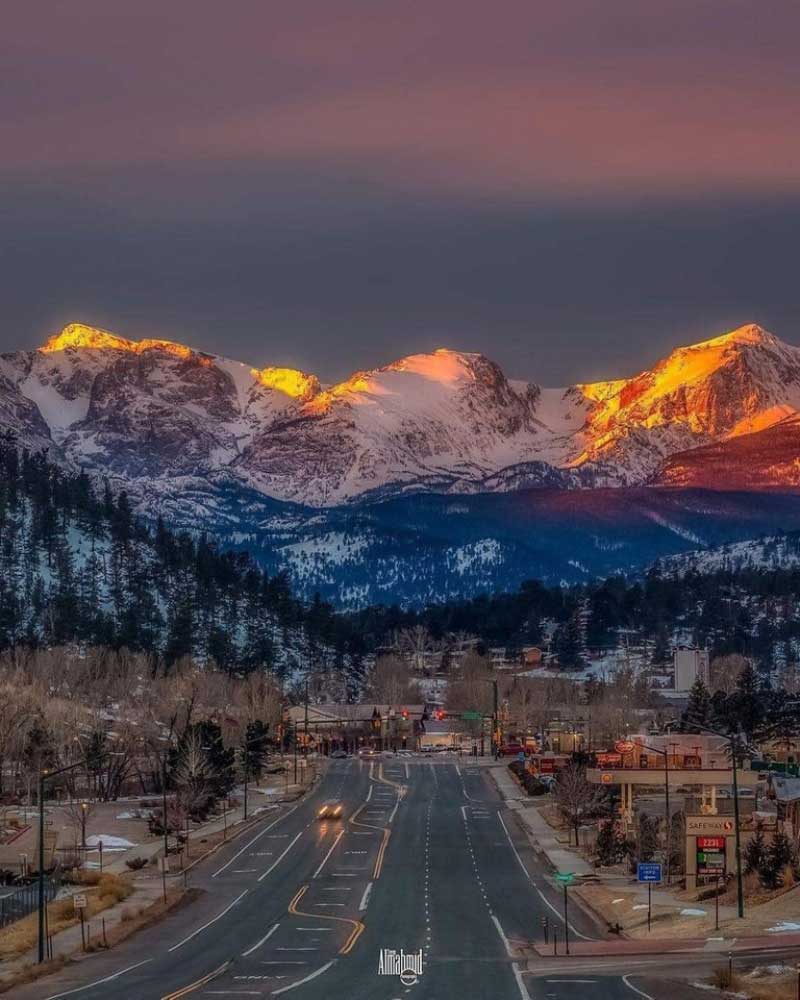
Rocky Mountain National Park (Colorado)
Rocky Mountain National Park in Colorado encompasses 415 square miles of diverse mountain environments. From lush valleys to towering peaks, the park offers a variety of landscapes to explore.
The Trail Ridge Road is the park’s most famous drive. It spans 48 miles and reaches elevations over 12,000 feet. The road offers stunning views of the mountains, alpine tundra, and wildlife. It’s typically open from late May to mid-October, depending on weather conditions.
The Bear Lake Road is another scenic route. It leads to Bear Lake, a popular destination with spectacular views of the surrounding peaks. The road is open year-round, but winter driving can be challenging.
Wildlife viewing is a highlight in Rocky Mountain National Park. Elk, bighorn sheep, and moose are commonly seen. Fall is the best time for wildlife watching, especially during the elk rut.
Rocky Mountain National Park has several campgrounds and backcountry campsites. Reservations are required for most campgrounds. The park is busiest in summer, so plan your visit accordingly.
Address: Rocky Mountain National Park, Estes Park, CO 80517
8. Bryce Canyon National Park (Utah)
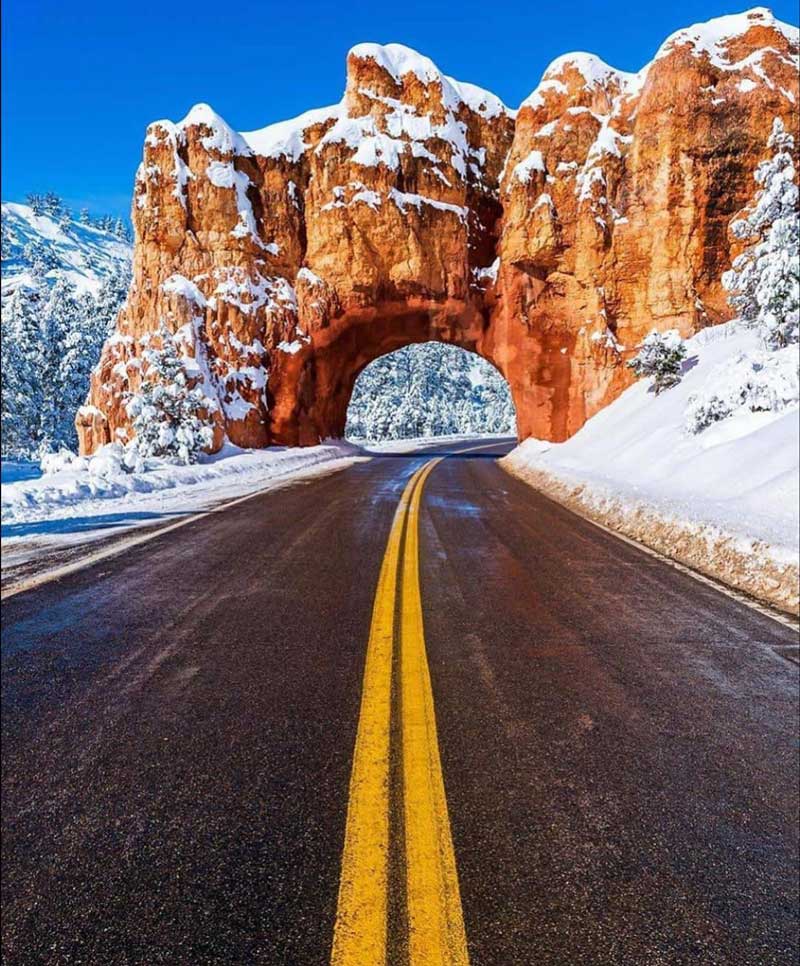
Bryce Canyon National Park (Utah)
Bryce Canyon National Park is famous for its unique rock formations called hoodoos. These tall, thin spires of rock are found throughout the park, creating a landscape that is both eerie and beautiful. The park is located in southern Utah and offers some of the best stargazing in the country.
The main road through Bryce Canyon National Park is the Scenic Drive, which is 18 miles long. This road takes you to several overlooks, including Bryce Point, Inspiration Point, and Sunset Point. Each overlook offers a different perspective of the hoodoos and the surrounding landscape.
Spring and fall are the best times to visit Bryce Canyon. Summer can be hot, but the high elevation keeps temperatures cooler than in the nearby deserts. Winter brings snow, creating a stunning contrast with the red rock formations.
Bryce Canyon has two campgrounds and a variety of lodging options. Reservations are highly recommended, especially during peak seasons. The park also offers ranger-led programs and night sky events.
Address: Bryce Canyon National Park, UT 84764
9. Arches National Park (Utah)
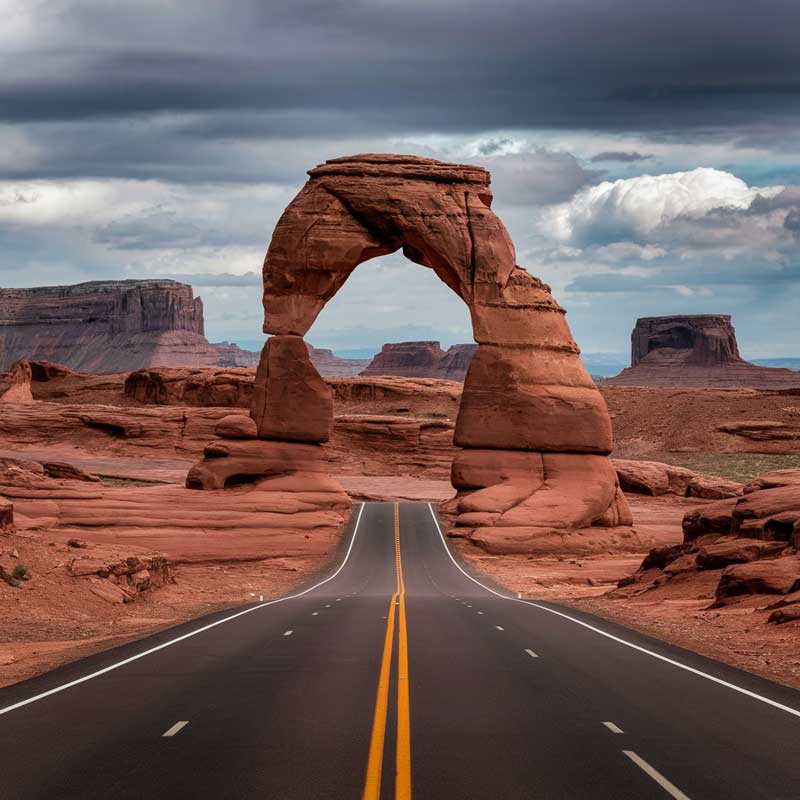
Arches National Park (Utah)
Arches National Park is home to over 2,000 natural stone arches, making it a red-rock wonderland. Located in eastern Utah, the park features dramatic landscapes of contrasting colors and textures. The most famous arch, Delicate Arch, is a must-see.
The main road through Arches National Park is the Arches Scenic Drive, which is 19 miles long. This road takes you to many of the park’s major attractions, including Balanced Rock, Double Arch, and the Windows Section. Each stop offers opportunities for short hikes and photo ops.
Spring and fall are the best times to visit Arches National Park. Summer can be very hot, with temperatures often exceeding 100 degrees Fahrenheit. Winter is mild, but some roads and trails may be icy.
Arches offers several campgrounds and a range of accommodations in nearby Moab. Reservations are essential, especially during the busy spring and fall seasons. The park also requires a timed entry ticket from April to October.
Address: Arches National Park, Moab, UT 84532
10. Shenandoah National Park (Virginia)
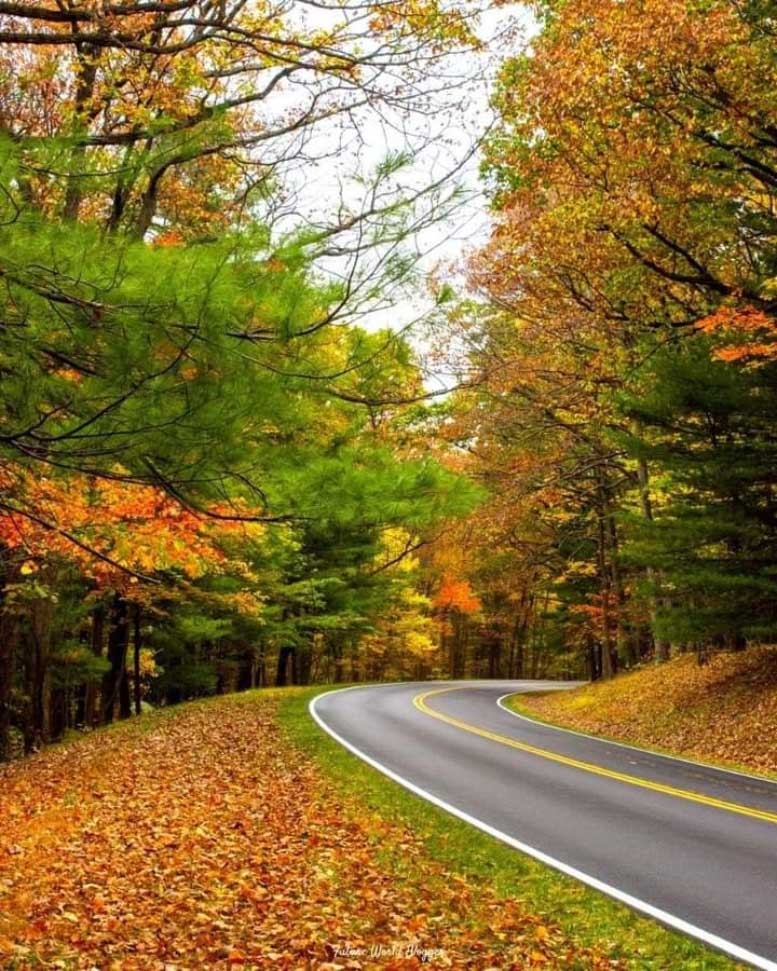
Shenandoah National Park (Virginia)
Shenandoah National Park, located in Virginia, is a stunning destination for a scenic drive. The park stretches along the Blue Ridge Mountains and offers breathtaking views, especially during the fall foliage season.
The highlight of a road trip through Shenandoah is the Skyline Drive. This 105-mile road runs the entire length of the park and provides over 75 overlooks where you can stop and take in the panoramic views. Each overlook offers a different perspective of the rolling hills and valleys below.
Spring and fall are the best times to visit. Spring brings blooming wildflowers, while fall offers vibrant autumn colors. Summer is also pleasant, though it can be busy. Winter can be beautiful, but be prepared for possible road closures due to snow and ice.
There are numerous hiking trails accessible from Skyline Drive, including the popular Old Rag Mountain and Dark Hollow Falls. The park also offers several campgrounds and lodges. Reservations are recommended, especially during peak seasons.
Address: Shenandoah National Park, 3655 U.S. Highway 211 East, Luray, VA 22835
11. Acadia National Park (Maine)
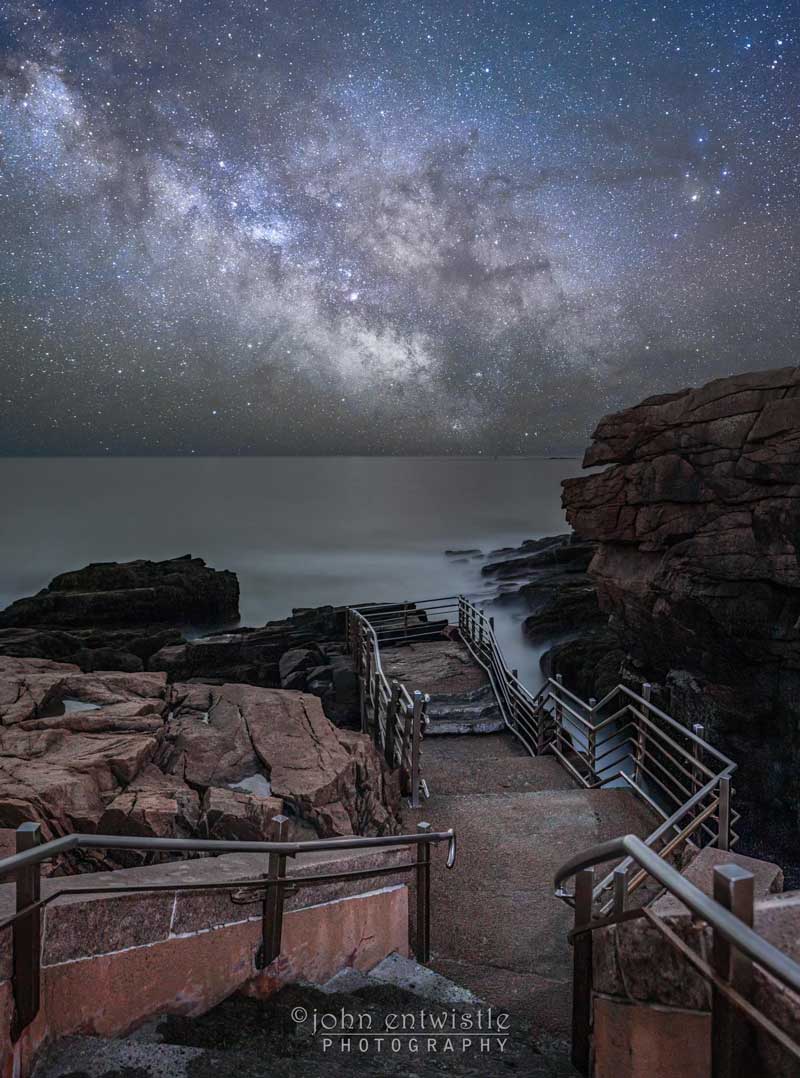
Acadia National Park (Maine)
Acadia National Park, located on the coast of Maine, offers a unique blend of ocean and mountain scenery. The park is famous for its rugged coastline, granite peaks, and diverse wildlife.
The Park Loop Road is the main scenic drive in Acadia. This 27-mile road takes you through some of the park’s most iconic landscapes, including Sand Beach, Thunder Hole, and Jordan Pond. A drive up Cadillac Mountain, the highest point on the U.S. East Coast, is a must. From the summit, you can see the first sunrise in the United States.
Summer and fall are the best times to visit Acadia. Summer brings warm weather and blooming flowers, while fall offers spectacular foliage. Spring is also beautiful, though it can be foggy. Winter is quiet, with some roads closed due to snow.
Acadia offers numerous hiking trails, ranging from easy walks to challenging climbs. The park has several campgrounds and nearby towns provide various lodging options. Reservations are highly recommended during peak seasons.
Address: Acadia National Park, P.O. Box 177, Bar Harbor, ME 04609
12. Olympic National Park (Washington)
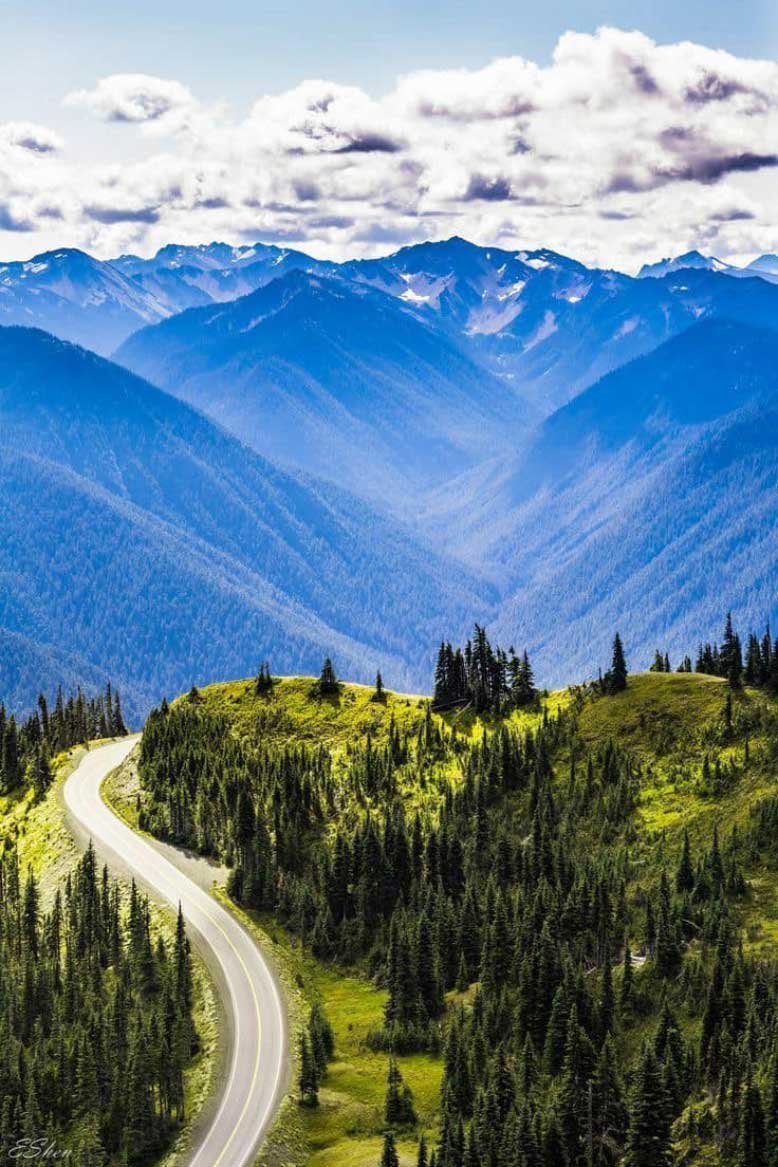
Olympic National Park (Washington)
Olympic National Park in Washington State is a land of diversity. The park features rugged coastline, lush rainforests, and towering mountains. Each area of the park offers a different landscape to explore.
The Olympic Peninsula Loop is a popular scenic drive. This 329-mile loop takes you around the park and provides access to its different regions. Highlights include Hurricane Ridge, where you can drive up to the top for stunning views of the Olympic Mountains. The Hoh Rain Forest offers a drive through a lush, green wonderland filled with moss-draped trees. The Pacific coastline features dramatic sea stacks and tide pools.
Spring and summer are the best times to visit Olympic National Park. Spring brings blooming wildflowers and waterfalls, while summer offers warm weather and clear skies. Fall and winter can be wet, but they provide a unique, quieter experience.
Olympic National Park offers numerous hiking trails, campgrounds, and lodges. Reservations are recommended, especially in summer. Be prepared for varying weather conditions and always check road statuses before your trip.
Address: Olympic National Park, 3002 Mount Angeles Road, Port Angeles, WA 98362
Final Thoughts
Driving through national parks offers an unforgettable experience. Each park provides unique landscapes and breathtaking views that make road trips truly special. Planning ahead, checking road conditions, and making reservations can enhance your trip.
Whether you’re seeking adventure, relaxation, or a bit of both, these scenic drives promise memorable moments and stunning vistas. Embrace the journey, enjoy the scenery, and create lasting memories on your national park road trip adventure.

